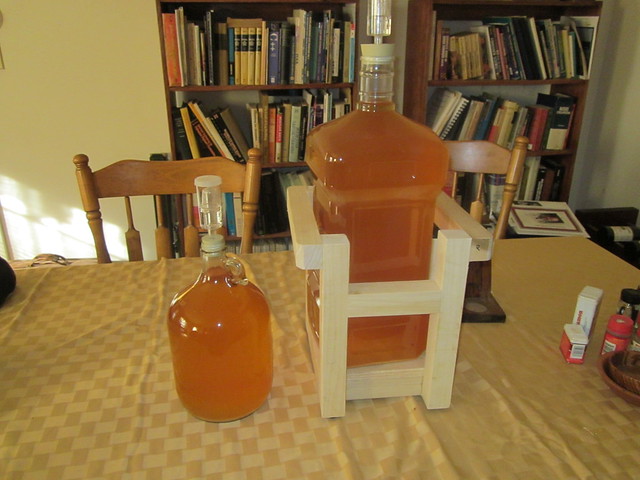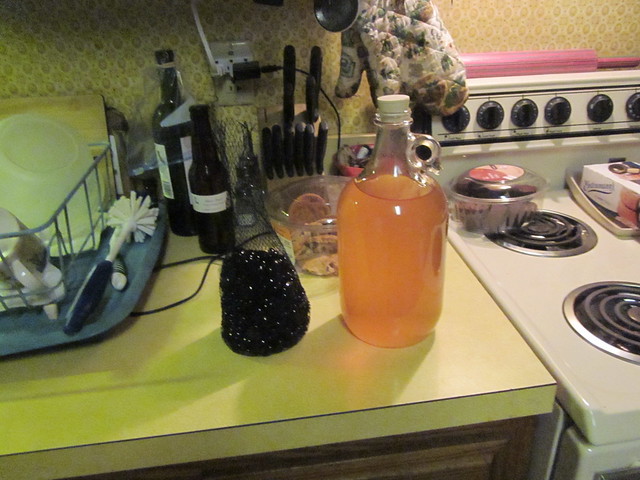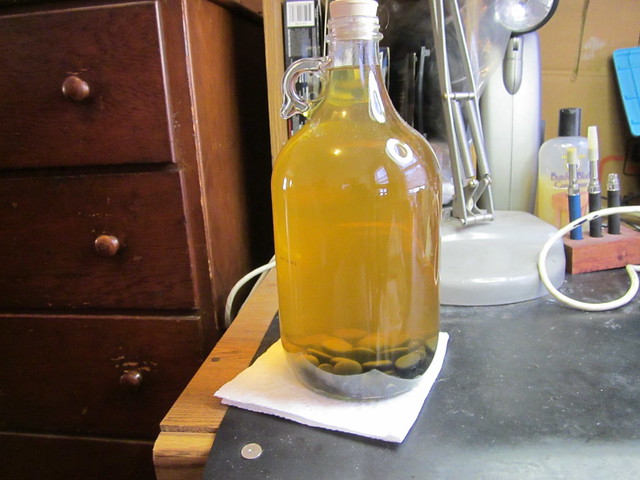I've read that minimising headspace is good because it minimises oxidisation, and I assume this applies to cider, not just beer. But I have several practical questions about headspace which aren't answered in the threads I consulted.
1. I'm brewing cider in a 24 litre bin and three 4.5 litre demijohns. I intend to leave the brews in their original containers (ie, I won't be using a secondary). Given that the gas above the liquid should be mostly CO2 by now, am I right in thinking that I don't have to worry about reducing headspace?
2. If that's wrong, or if my plans change, how much (or how little) headspace should I aim to finish up with? An inch? More? Less? Or should I not worry about an absolute measure of headspace, and just keep it to a minimum when selecting vessels and measuring quantities at the outset?
3. How would I reduce headspace in practice? Would I add distilled water, or could I use shop-bought AJ (without preservatives)? After the initial burst of activity, topping up the demijohns with AJ (leaving barely any headspace) seems like a reasonable idea.
1. I'm brewing cider in a 24 litre bin and three 4.5 litre demijohns. I intend to leave the brews in their original containers (ie, I won't be using a secondary). Given that the gas above the liquid should be mostly CO2 by now, am I right in thinking that I don't have to worry about reducing headspace?
2. If that's wrong, or if my plans change, how much (or how little) headspace should I aim to finish up with? An inch? More? Less? Or should I not worry about an absolute measure of headspace, and just keep it to a minimum when selecting vessels and measuring quantities at the outset?
3. How would I reduce headspace in practice? Would I add distilled water, or could I use shop-bought AJ (without preservatives)? After the initial burst of activity, topping up the demijohns with AJ (leaving barely any headspace) seems like a reasonable idea.





